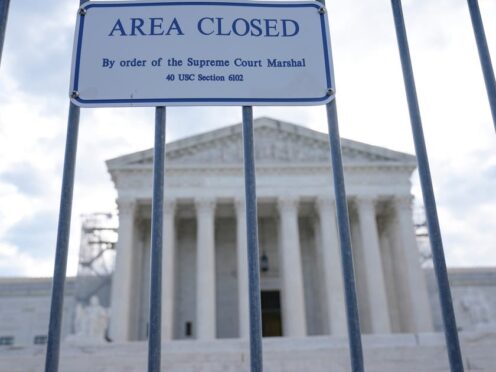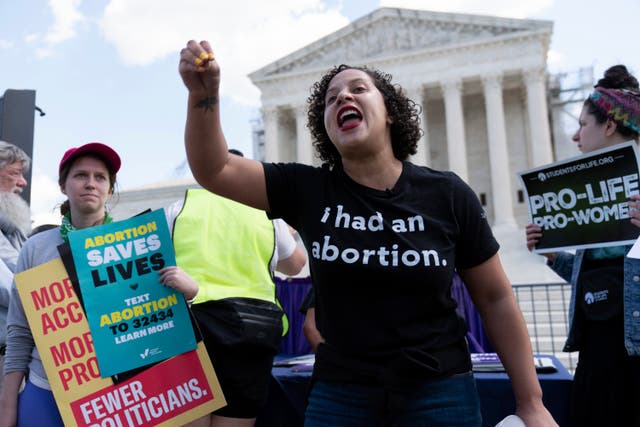
A county judge could rule as early as Monday on the US state of Ohio’s law banning virtually all abortions, a decision that will take into consideration the decision by voters to enshrine reproductive rights in the state constitution.
The 2019 law under consideration by Hamilton County Common Pleas Judge Christian Jenkins bans most abortions once cardiac activity can be detected, which can be as early as six weeks into pregnancy, before many women are aware.
A group of abortion clinics sought to overturn the law even before voters approved Issue 1, which gives every person in Ohio “the right to make and carry out one’s own reproductive decisions”.
Ohio’s Republican attorney general, Dave Yost, acknowledged in court filings that the 2023 amendment rendered the ban unconstitutional, but has sought to maintain other elements of the prohibition, including certain notification and reporting provisions.
Ohio was the only state to consider a statewide abortion rights question in 2023, joining a growing number of states where voters are choosing to protect abortion access since the US Supreme Court overturned the nationwide protections granted by its landmark 1973 Roe v. Wade ruling.
Besides the case before Jenkins, challenges also are pending to several of Ohio’s other abortion restrictions.
Those include a ban on the use of telehealth for medication abortions, a requirement that foetal remains from surgical abortions be cremated or buried, a 24-hour waiting period requirement and a mandate that abortion clinics maintain emergency transfer agreements with local hospitals.

Such agreements have been rendered impossible to get by related laws in some cases.
Ohio’s ban on abortions because of a Down’s syndrome diagnosis remains in effect, following a federal court decision in 2021.
Minority Democrats proposed a House measure to bring state law into compliance with the new amendment outside the courts.
Their bill, a nonstarter with Ohio’s Republican supermajorities, would have repealed the cardiac activity ban; a ban on dilation and evacuation, a common second-trimester abortion procedure; mandatory 24-hour waiting periods; the transfer agreement requirement; and other targeted restrictions on abortion providers.

So far, Ohio’s parental consent law has not been challenged in court nor targeted by Democrats, though the anti-abortion Protect Women Ohio campaign suggested it would be a casualty of Issue 1’s passage.
Litigation also has not been filed to challenge Ohio’s ban on dilation and extraction, a procedure once used in the third term of pregnancy.
Mr Yost opined during the voter amendment campaign that Issue 1 would open the door to allowing them, despite the procedure being banned at the federal level.
So-called “heartbeat bills” originated in Ohio before taking off across the country.
But it was a decade before the policy became law in the state.
Then-Republican governor John Kasich twice vetoed the measure, arguing it was unlikely to pass constitutional muster in a time when Roe v. Wade was still the law of the land.
The law arrived on Republican governor Mike DeWine’s desk and he signed it after justices appointed by former president Donald Trump solidified the Supreme Court’s conservative majority, raising hopes among abortion opponents that restrictions could finally be successfully imposed.

Enjoy the convenience of having The Sunday Post delivered as a digital ePaper straight to your smartphone, tablet or computer.
Subscribe for only £5.49 a month and enjoy all the benefits of the printed paper as a digital replica.
Subscribe